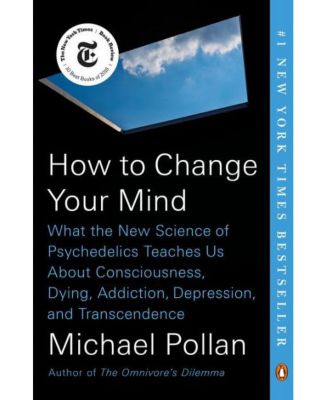How to Change Your Mind- What the New Science of Psychedelics Teaches Us about Consciousness, Dying, Addiction, Depression, and Transcendence by Michael Pollan
Product Details
Web ID: 8511449Boring
How to Change Your Mind: What the New Science of Psychedelics Teaches Us About Consciousness, Dying, Addiction, Depression, and Transcendence by Michael Pollan Pollan describes what it's like to take psychedelics. But beyond that, he also walks the reader through the history of these drugs and surveys the latest research into their therapeutic potential. It's a sprawling book that is likely to change how you think not just about psychedelic drugs but also about the human mind. LSD - lysergic acid diethylamine - was discovered in 1938 by Albert Hofmann, a Swiss chemist at Sandoz who was searching for a drug to stimulate circulation. LSD was the 25th molecule that Hoffman synthesized from the alkaloids produced by ergot a fungus that infects grains, thus the acronym LSD25. Shelved when proved ineffective, it was redeveloped five years later after Hofmann accidentally ingested a small quantity and he discovered its powerful psychoactive properties. Sandoz marketed the drug under the brand name Delysid in 1947 but it was withdrawn from the market after the FDA branded it a Schedule I substance under the Controlled Substances Act. In recent years, however, work has quietly begun again on the amazing potential of tryptamines: LSD, psilocybin (found in mushrooms), and DMT (N, N-dimethyltryptamine or the "businessman trip). The book also talks about ayahuasca, the psychedelic tea made from a combination of plants in the Amazon basin, used for sacramental purposes by indigenous people of South America. In 2006, the Supreme Court reaffirmed the right of the Brazil-based UDV Church to use it as a sacrament, protected by The Religious Freedom Restoration Act of 1993. Could these drugs, in fact, improve the lives of many people? Diving deep into this extraordinary world and putting himself forward as a guinea pig, Michael Pollan has written a history of psychedelics and a portrait of the new generation of scientists fascinated by the implications of these drugs. How to Change Your Mind is a report from what could very well be the future of human consciousness. Written from the first-person point of view, the book is tediously boring, repetitive, and clearly biased. It was a very slow read, I fell asleep several times trying to read it. I believe the book should be used to treat insomnia.

Customer review from barnesandnoble.com

